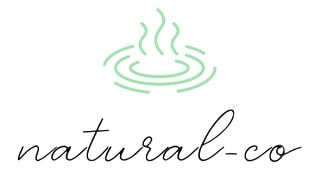How Does Klarna Make Money — And Is Klarna Actually Making Money Now?
- How Does Klarna Make Money — And Is Klarna Actually Making Money Now?
- What Exactly Does Klarna Do?
- How Does Klarna Make Money?
- So… Is Klarna Currently Making Money? (2024–2025 Update)
- Why is Klarna making money now?
- What Are Klarna’s Biggest Risks?
- My Personal Take — The Real Reason Klarna Makes Money
- What Can Founders Learn From Klarna?
“Klarna didn’t reinvent credit. It reinvented how people feel about credit.”
When I look at Klarna’s business model, I don’t just see a Buy Now, Pay Later company. I see a hybrid between a payments network, a data company, and a retail conversion engine — all wrapped in a Gen-Z-friendly brand. People often wonder how Klarna makes money when many of its core services feel “free.” But nothing in payments is ever truly free. It’s simply paid for by someone else. So here’s my deep dive into how Klarna earns revenue — and more importantly, whether the company is actually making money now.
What Exactly Does Klarna Do?
Klarna is a “BNPL + shopping + payments” super-app. Its ecosystem includes:
-
Buy Now, Pay Later (Pay in 4 / Pay in 30 days)
-
Long-term financing
-
A Klarna Visa debit & credit card
-
Price comparison tools
-
Cashback & rewards
-
A shopping browser extension
-
Escrow-like protection for buyers
-
Retailer insights & conversion tools
Klarna’s mission is simple: Make spending feel smooth — then monetize the flow of that spending.
How Does Klarna Make Money?
When people ask “How does Klarna make money?” most think of late fees. But that’s actually a small piece of the pie. Klarna earns money from four main engines:
1️⃣ Merchant Fees — Klarna’s Revenue Source
Most BNPL users think Klarna is free. And it is — for the shopper. But retailers pay 2.5%–6% + fixed fees for every Klarna transaction. Why do merchants pay? Because Klarna increases:
-
conversion rates
-
average order value
-
repeat purchase frequency
-
checkout completion rates
In Klarna’s own data, merchants see a 20%–30% revenue lift when BNPL is offered.
My take:
Klarna isn’t a credit company. It’s a merchant growth partner that gets paid based on performance.
This is why its merchant revenue is so strong and so sticky.
2️⃣ Interest Income & Financing Revenue
For longer-term payment plans (6–36 months), Klarna charges:
-
interest
-
financing fees
-
account management fees
This part of the business functions more like a traditional lender, just wrapped in colorful UX and soft language.
3️⃣ Late Fees (Small but Consistent)
Klarna charges small late fees in certain markets. They’re capped, regulated, and not a major percentage of total revenue.
But because Klarna has over 150+ million users, even tiny fees add up.
4️⃣ Interchange Fees (Klarna Card)
Klarna’s debit & credit cards generate:
-
interchange revenue
-
FX fees
-
merchant rebates
-
operational partnerships with Visa & banks
This revenue is less volatile than BNPL volume — and Klarna is leaning into it hard.
5️⃣ Data, Ads & Retail Insights (The underrated engine)
This is where Klarna becomes more like Meta + Shopify + Google:
-
Sponsored placements in the Klarna app
-
Brand ads
-
Shopping analytics
-
Product discovery tools
-
Traffic-driving campaigns for brands
Klarna has become a retail media platform — and this revenue stream is growing fast.
So… Is Klarna Currently Making Money? (2024–2025 Update)
Short answer: Yes — Klarna is profitable again.
Here’s the data:
Klarna is profitable for multiple consecutive quarters
-
Q1 2025 revenue: ~$701 million
-
Q2 2025 revenue: ~$823 million
-
Operating profit: positive
-
Net profit margin: improving but slim
Klarna publicly reported continued operating profitability into 2025. This is a dramatic turnaround from 2022, when Klarna lost over $1 billion during expansion.
Why is Klarna making money now?
-
BNPL risk models improved
Klarna rebuilt its underwriting using AI + behavioral data. Bad debt dropped significantly.
-
Merchant revenue is stable and high-margin
The more brands join Klarna, the more predictable revenue becomes.
-
Klarna reduced operating costs
They streamlined engineering, operations, and global teams.
-
Klarna became a “shopping ecosystem” instead of just BNPL
Higher-margin revenue sources (ads, interchange, data) are now growing.
-
Klarna Card adoption skyrocketed
In some markets, the card is now Klarna’s #1 profit driver.
What Are Klarna’s Biggest Risks?
BNPL is a growing but fragile space. Here’s what I worry about:
1️⃣ Regulation risk
Governments in the US, UK, and EU want BNPL to be treated like credit.
This could create compliance overhead.
2️⃣ Credit losses during recessions
If consumers default more frequently, profits flip quickly.
3️⃣ Competitive pressure
- Apple Pay Later
- PayPal Pay in 4
- Affirm
- Afterpay
- Big platforms can destroy margins simply by copying.
4️⃣ Dependence on retail spending cycles
If shopping volume falls, merchant fees fall too.
My Personal Take — The Real Reason Klarna Makes Money
From my perspective, Klarna wins because it monetizes three behaviors:
-
Spending
BNPL makes checkout feel lighter → more transactions.
-
Browsing
The Klarna app is basically TikTok for shopping.
Attention = money.
-
Payment rails
Cards, checkout tools, merchant analytics → recurring revenue.
Klarna’s insight was simple:
If you control how people shop, you eventually control how money moves.
That’s a powerful business model.
What Can Founders Learn From Klarna?
Here’s what I take away:
| Klarna Case Study Insight | Business Lesson | How to Apply in Real Life |
|---|---|---|
| Klarna charges merchants, not users | Make money from the side of the market that gains the most | If your product increases sales, charge businesses, not customers |
| Klarna increases conversion rates by removing friction | Reducing purchase friction increases revenue | Remove steps, simplify checkout, shorten forms |
| Klarna monetizes attention inside its app | Platforms can earn by owning the discovery experience | Create an ecosystem that keeps people browsing |
| Klarna turned itself into a shopping engine, not just BNPL | Expand your value chain to capture more revenue stages | Don’t stay a “tool” — become the entire journey |
| Klarna uses AI to lower credit losses | Smarter risk models protect margins | Use data to filter bad customers, not to chase them |
| Klarna wins by being “interest-free” upfront | A friendly brand increases lifetime value | Make your product feel safe, even if monetization is invisible |
| Klarna bundles multiple revenue streams | Diversification stabilizes profits | Build more than one source of income into your business |
Klarna shows that financial services don’t need to feel like banking. They can feel like shopping.

